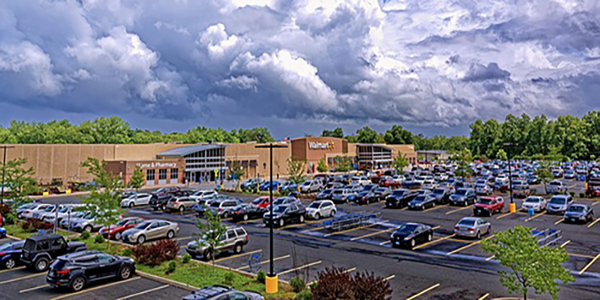 |
||||||||||||
|
||||||||||||
| Retail Media Ad Spend Expected to Reach $61 Billion by 2024 |
 |
| Retail media is continuously on the rise, and most recently, we've discovered that U.S. digital retail media ad spending will hit $61.15 billion by the end of the 2024 forecast period, according to eMarketer. Digital retail media advertising refers to website and app-based ads bought through retailer networks or DSPs like Amazon or Walmart. Pre-pandemic ad spend was only $13.23 billion, and eMarketer predicts ad spend will reach 40.81 billion by the close of 2022. Nonetheless, if this prediction of $61 billion by 2024 rings true, retail media will see a compound annual growth rate (CAGR) of 30.9% in four years. Digital commerce channel ad spend, retail media's largest division is expected to grow 29.0% to $52.63 billion between 2020 and 2024. "Retail media networks are among the fastest-growing and most dynamic ad marketplaces in the U.S.," eMarketer's report says. "Retailers think of these operations as a means to boost revenues by leveraging their scale and their troves of first-party data." |
| For those who missed out on Pub Forum Montreal last week, we had Sharon Harris, CMO, Ascential, as one of our keynotes and she reminded publishers in the room that everyone is a retailer and that digital commerce is the way to go. While there are still publishers dragging their feet on adding commerce opportunities to their revenue strategies, now is the time to let go of your retail media fears. While Q2 overall digital ad spend was on the decline, retail media ad spend is growing exponentially — so it's best to get a piece of that pie before it's ultimately too late. Retail media is growing faster than all major US ad revenue channels except for CTV. According to eMarketer, CTV will have a CAGR of 33.3% from 2020 to 2024. All other areas are seeing lower growth rates for that time frame, video (26.2%), social media (21.4%), digital (20.0%), and search (18.5%). With this projection, retail media is neck and neck with traditional TV, which is expected to reach $67.17 billion in 2024. TV still has retail media beat, but it may not be long after 2024 that we see retail media ahead of traditional TV. |
| Walmart's New Streaming Deal Includes Paramount + |
 |
| Are we gearing up for a battle of the retail streaming giants? Walmart is shifting gears to be less like dying department stores and more like Amazon, which has its hands in almost every facet of the ad tech business. Amazon exceeded way past just being a commerce company a while ago to step on the heels of Facebook and Google, but Walmart just didn't have the content or ad tech capabilities down to compete. These days the tables are turning (ever so slightly) as Walmart+ will include the ad-supported tier Paramount+, Paramount's subscription streaming service. The service, which is $4.99/ month with ads, is offered free to Walmart+ subscribers under this new deal. The streaming bundle will also include a six-month Spotify subscription, free shipping, and discounts on gas. Paramount+ offers movies from brands and production studios like BET, VH1, Comedy Central, Nickelodeon, CBS, and Paramount Pictures, among others. Walmart+ is also cutting membership prices to compete with Amazon. A Walmart+ membership is $12.95 or $98 a year, while Amazon Prime costs $14.99 a month or $139 a year. |
| Massive media companies are thinking outside the box and looking to giants in other industries to increase subscribers. Verizon, for instance, offers a Disney+ deal, and this incentive increases mobile customers for Verizon. In turn, Disney receives a surplus of new subscribers. The partnership benefits both pubs. And at one point, Walmart purchased ad-supported video service Vudu, but it eventually sold it to Fandango, owned by NBCUniversal, in 2020. Walmart also established a joint partnership with Eko, an interactive video game company. These mega deals are happening across many channels. Streaming is becoming increasingly competitive, and with Paramount+'s 43.3 million paid subscribers, Walmart is looking to take on Amazon's 200 million subscribers. Yet, Walmart has not been that transparent about the current amount of subscribers on Walmart+. But in 2020 when the streaming service began, it had between 11 and 32 million members, according to varied estimates provided by firms, including Consumer Intelligence Partners and Deutsche Bank. We're sure numbers have grown since then, but still, Walmart has a ways to go to reach Amazon's subscriber numbers. In the commerce world, Walmart acquired e-commerce company Jet.com in 2016 and has done everything in its power to compete with Amazon, including generating its own third-party marketplace for digital sellers, launching a membership program, and investing in media services to attract new subscribers. We anticipate Walmart will see a considerable increase in ad spend with this new Paramount+ offering. Next up: retail media and streaming will get a lot cozier with one another. |
| What AppLovin/ Unity/ IronSource Deals Mean for the Future of In-app Header Bidding |
 |
| It is sage advice to always expect the unexpected and the ad tech industry took heed of that advice when software company, AppLovin, made an offer to combine with video game company Unity. News of the potential $17.54 billion in an all-stock deal came only three weeks after Unity announced plans to acquire IronSource for $4.4 billion. When the acquisition was first announced, a spokesperson for the company said, “We have received the offer from AppLovin and our board will thoroughly evaluate it." AppLovin is best known as a mobile ad tech company, but business moves over the past couple of years have positioned them to expand into video game publishing. For example, the company bought the mobile game maker Machine Zone for $500 million. Despite AppLovin's offer, Unity rejected it and decided to continue their acquisition of IronSource. Unity CEO John Riccitiello released a statement saying, "The Board continues to believe that the ironSource transaction is compelling and will deliver an opportunity to generate long-term value through the creation of a unique end-to-end platform that allows creators to develop, publish, run, monetize and grow live games and real-time 3D content seamlessly." |
| On the surface, either acquisition could appear as three large companies trying to increase their revenue. However, they indicate the benefits of in-app header bidding for publishers if observed keenly. Mobile Dev Memo Analyst, Eric Seufert, predicted this trend in 2018. In the article, Seufert anticipates a shift to programmatic buying on the part of advertisers. Essential to that transition was the implementation of in-app header bidding, which he said would "provide better yields to publishers (and, if the market operates efficiently, that increase in yield should generate some cost savings for advertisers)." In-app header bidding will allow publishers to utilize the total value of the inventory and increase their revenue, a vital resource when many experts predict that we are in an ad recession. If AppLovin had officially combined with Unity, it will have access to more first-party data to fuel its machine-learning algorithm. This could help both companies prepare for the new privacy regulations and cookie-less future ahead. As a combined force, AppLovin and Unity would have a system that includes "3-D game creation, user acquisition, monetization, analytics, attribution, and programmatic advertising." But instead, it looks like Unity opted for "a scaled mediation platform" that when combined with its own network unleashes powerful competitive value that opens up more potential for revenue while also empowering content creators. |
| Around The Water Cooler | |

Image sourced from
|
|
|
|










